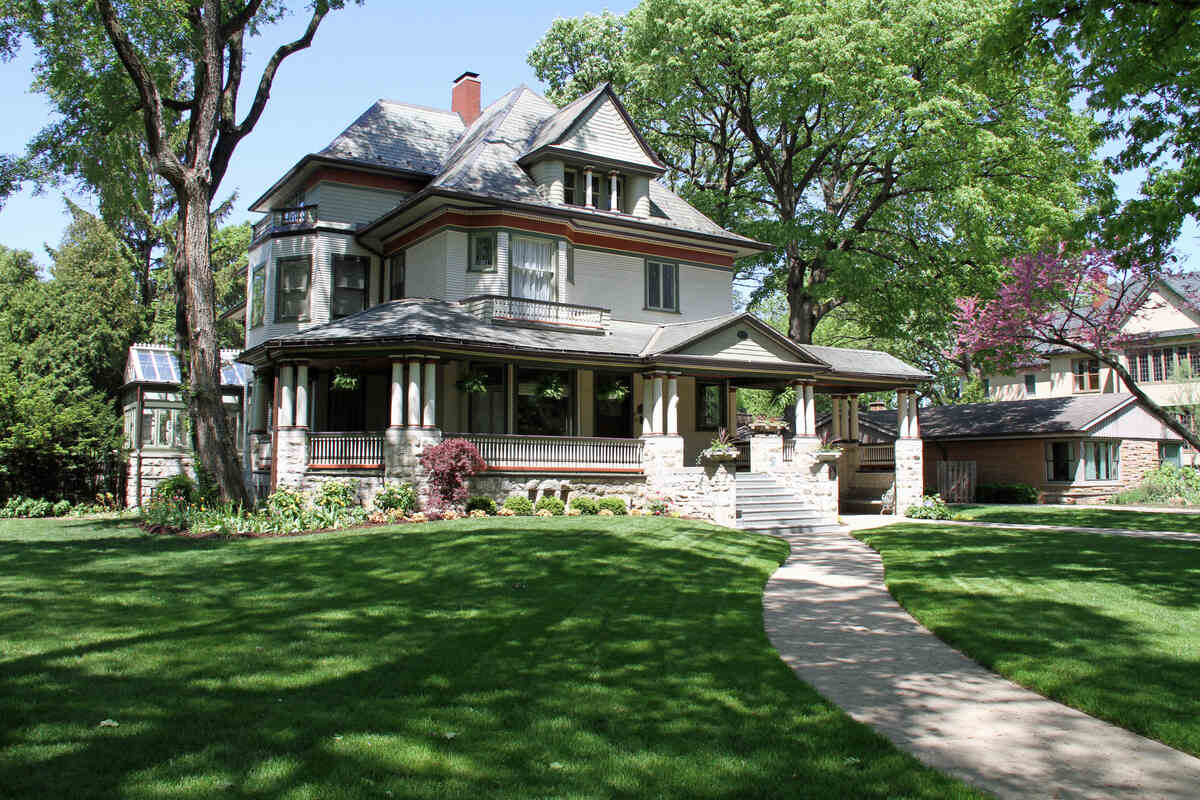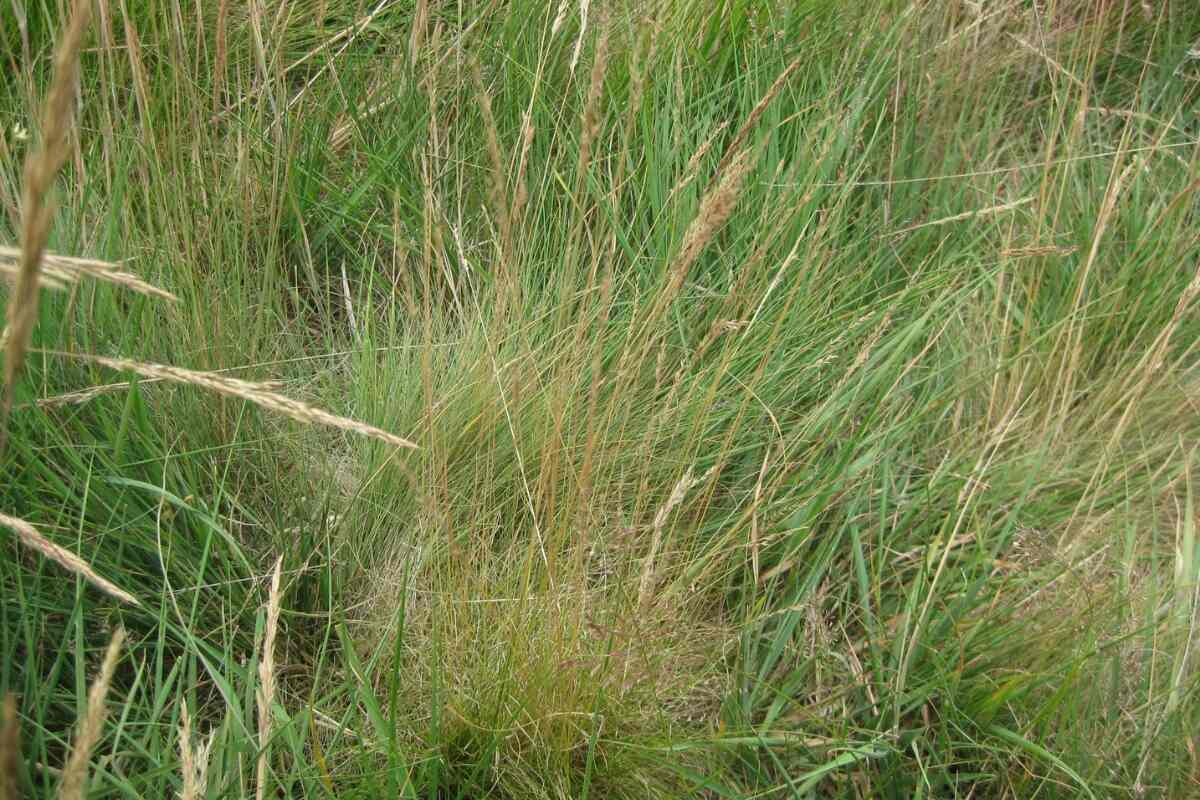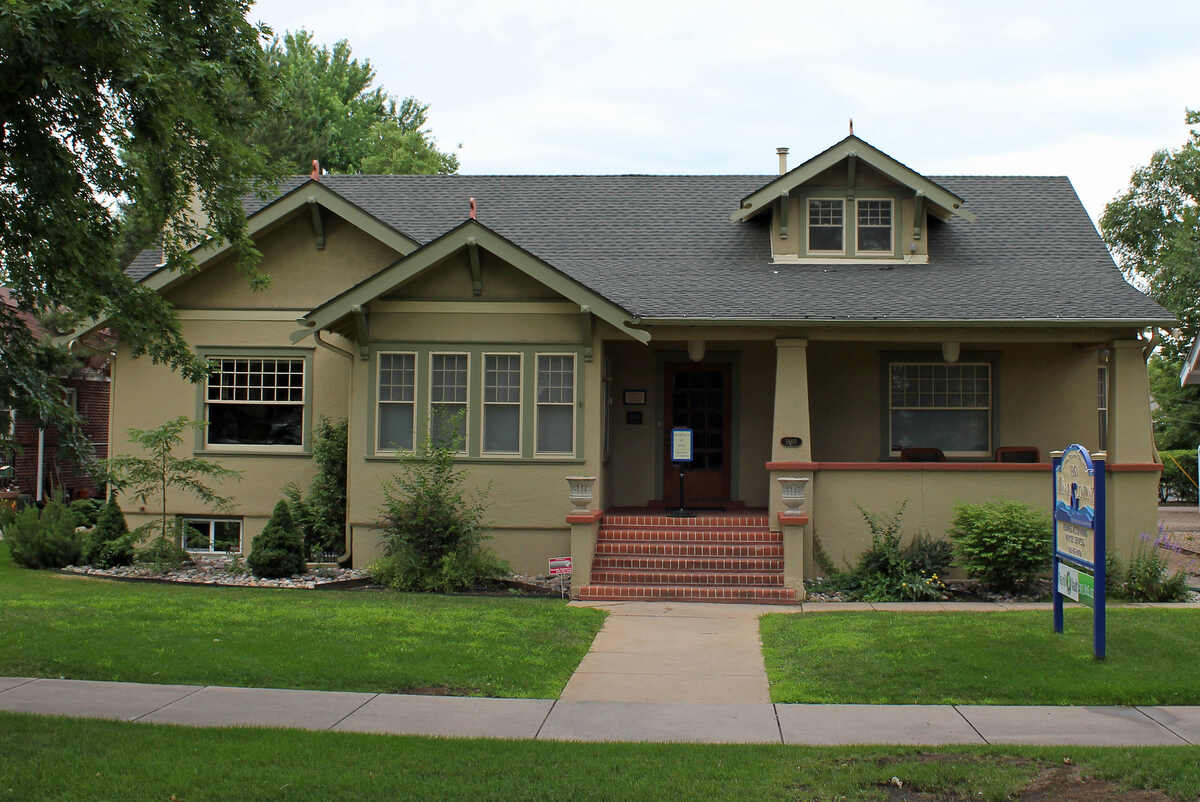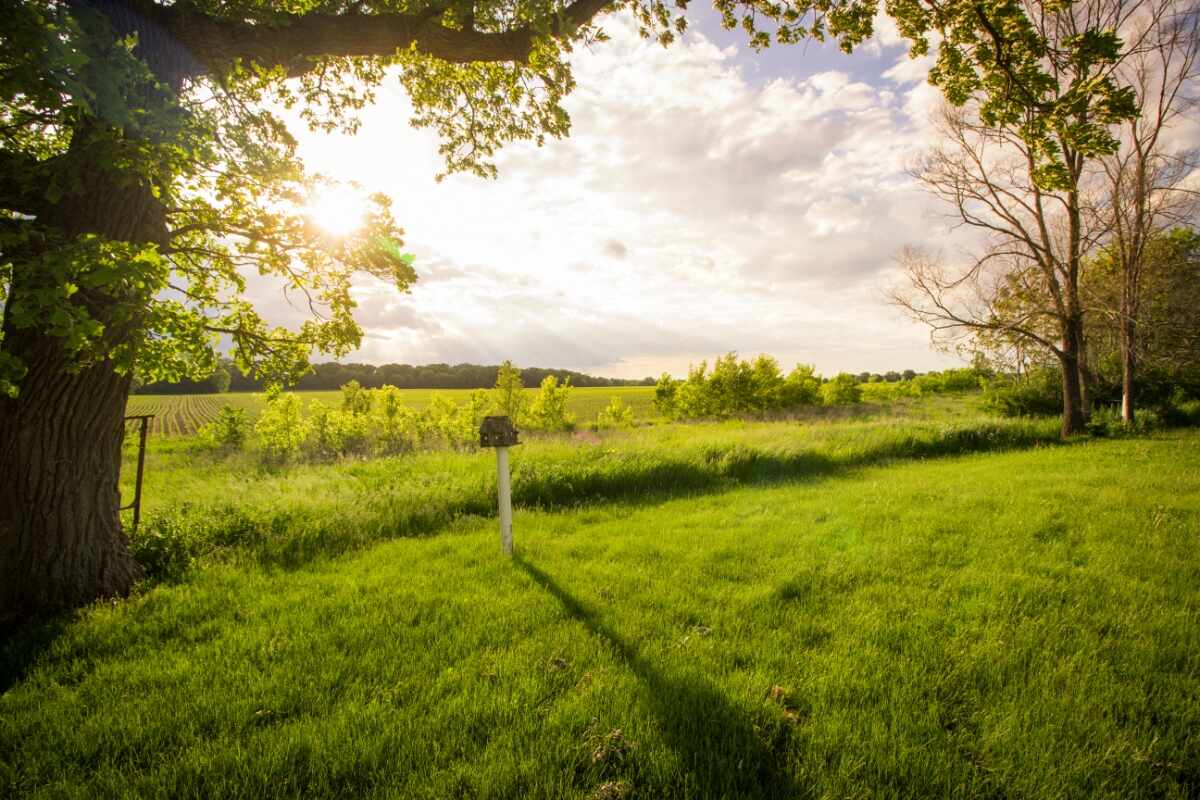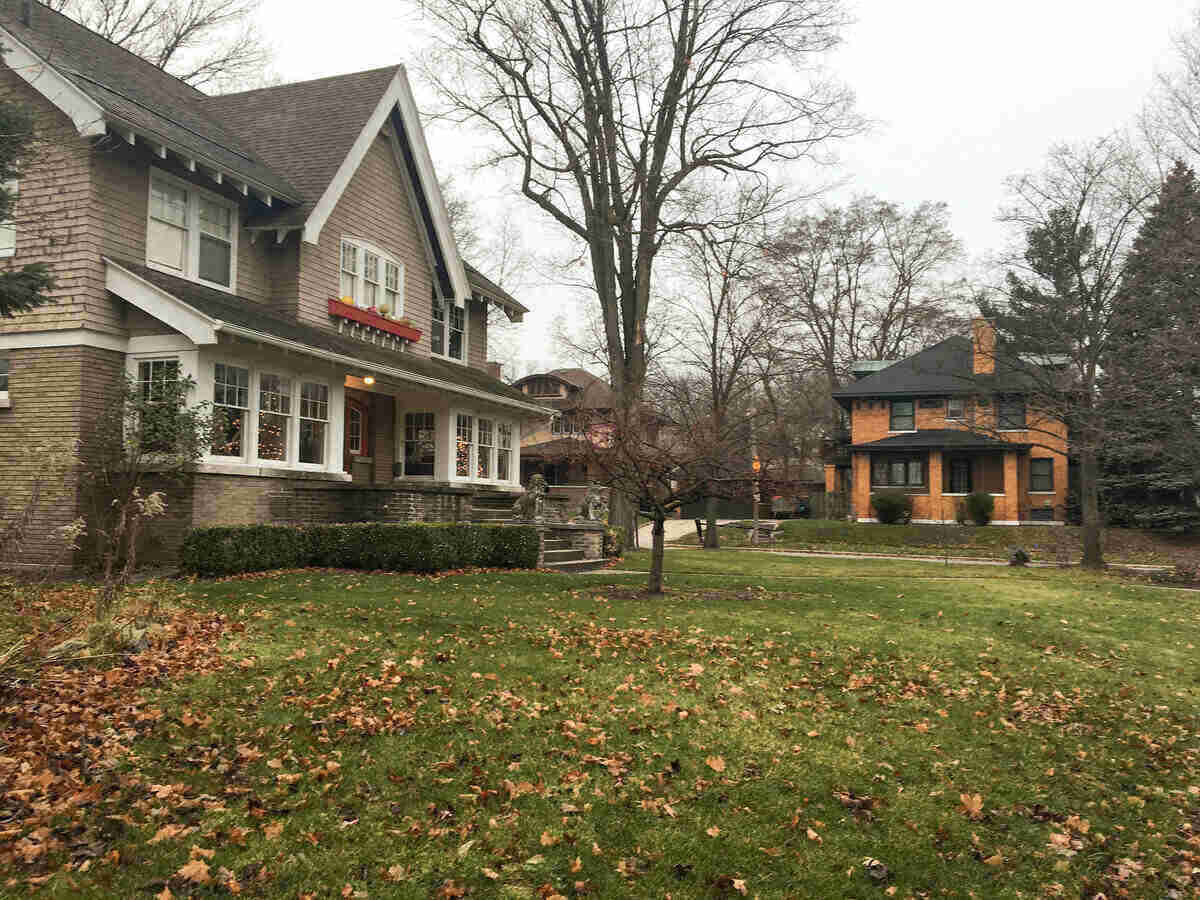
Like most of western Michigan, Grand Rapids’ climate is influenced by its position near Lake Michigan. Your lawn will benefit from mild springs and falls, but it must tolerate hot, humid summers, as well as cold winters marked by sudden lake-effect snowstorms. Check our guide for the four best grass types for your lawn in Grand Rapids.
We’ve also included below some tips to help you choose the best grass type for your Summit City lawn.
Kentucky Bluegrass
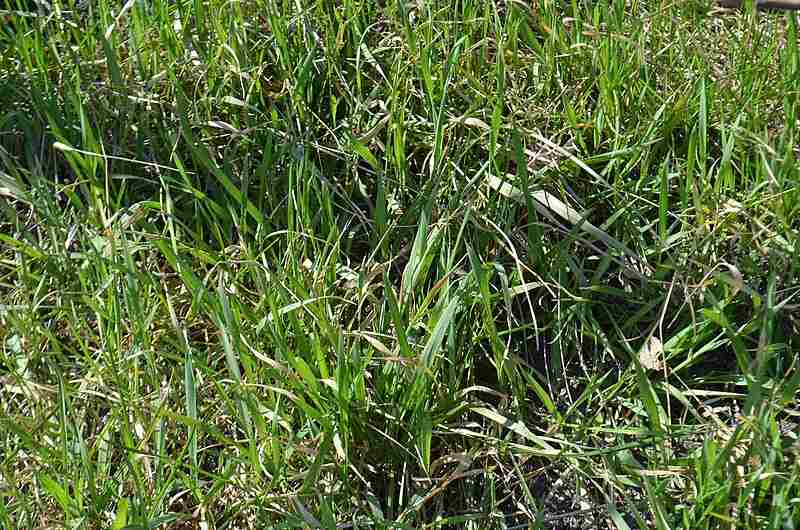
Photo Credit: Ethan2039 / Wikimedia Commons / CC BY-SA 4.0
This cool-season grass is a popular choice for lawns across Michigan. This perennial grass, known for its distinctive blue-green color, holds up to foot traffic and can quickly repair any damage. Best of all, it tolerates the cold, making it a good choice for Grand Rapids, which sits in USDA Plant Hardiness Zone 6a.
However, Kentucky bluegrass germinates slowly, which makes it weed-prone if seeds are planted in early spring. It is often blended with quick-germinating perennial ryegrass for quick cover.
Kentucky bluegrass prefers full sun, but you can blend it with a fine fescue (usually one of the creeping reds) in a yard with a mix of sun and shade. It also needs frequent watering during the summer.
- Classification: Cool-season grass
- Spreads by: Rhizomes
- Shade tolerance: Low
- Drought tolerance: Moderate
- Foot traffic tolerance: Moderate
- Maintenance needs: Moderate mowing frequency and high fertilization needs.
- Mowing height: Set mowing height between 2.5 and 3.5 inches.
- Potential for disease: Moderate to high; prone to several diseases, such as dollar spot, leaf spot, necrotic ring spot, summer patch, and stripe smut.
- Soil pH: 6-7.5
- Soil type: Performs best in well-drained, heavy soils with high fertility.
Other notes: Seeding in late summer and early fall is best. October seeding might work if the weather remains warm.
Pro Tip: To keep your lawn in top form all summer long, check out our list of 9 Summer Lawn Care Tips for Grand Rapids.
Grass Seed Options:
– Jonathan Green (11970) Blue Panther Kentucky Bluegrass Grass Seed (3 lbs.)
– SeedRanch Midnight Kentucky Bluegrass Seed (5 lbs.)
– Jacklin Seed – Biltmore Blue Blend – 100% Kentucky Bluegrass (5 lbs.)
Perennial Ryegrass
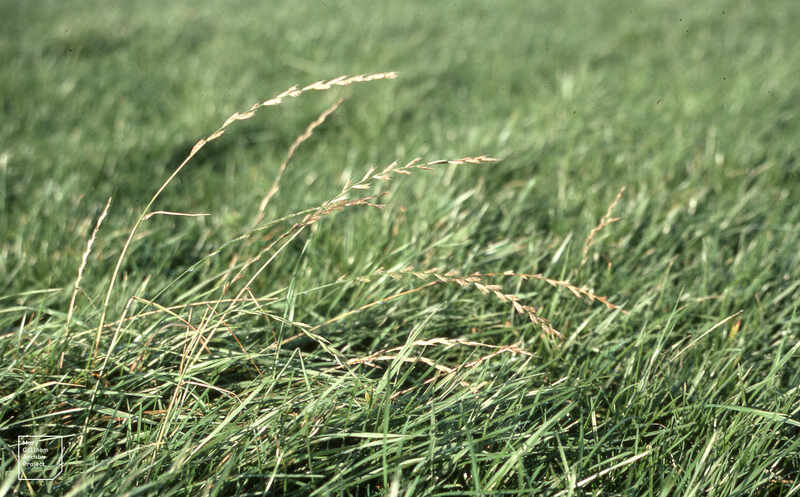
Photo Credit: Dr Mary Gillham Archive Project / Flickr / CC BY 2.0
This bunch-type grass is popular because it germinates and greens up quickly. That’s why it is usually sold in a mix with slower-growing Kentucky bluegrass or other cool-season grasses. It is also durable, meaning it will stand up to your kids and pets, as well as the weekly touch football game.
However, some versions of perennial ryegrass do not stand up well to extreme cold. Look for an improved variety that can handle Grand Rapids winters.
- Classification: Cool-season grass
- Spreads by: Has a bunch-type growth habit
- Shade tolerance: Low
- Drought tolerance: Low
- Foot traffic tolerance: High
- Maintenance needs: Moderate mowing and fertilization requirements. Thatch is not significant.
- Mowing height: Set mowing height to 1.5 to 2.5 inches
- Potential for disease: High. Common diseases include gray leaf spot, red thread, and leaf spot/melting-out.
- Soil pH: Can grow in soils with a pH between 5 and 8, but prefers between 6 and 7.
- Soil type: Prefers good drainage and fertility but can tolerate some poor drainage.
Other notes: Seeding can take place as early as late April.
Grass Seed Options:
– Outsidepride Perennial Ryegrass Seed (5 lbs.)
– Eretz ProTurf Perennial Ryegrass Fine Lawn Seed (choose your size)
Fine Fescues
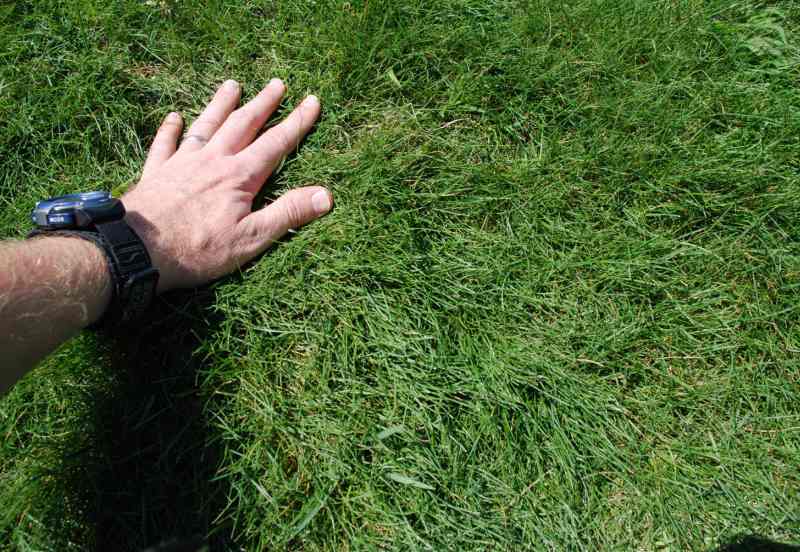
Aaron J. Patton, Ph.D. / Turfgrass Extension Specialist at Purdue University
Fine fescues are a group of cool-season grasses, and each has its own characteristics:
- Strong and slender creeping red fescue
- Chewings fescue
- Hard fescue
- Sheep fescue
One thing all of the fine fescues have in common: They are very low-maintenance grasses. They need less water and fertilizer than bluegrass or ryegrass. They also are more shade tolerant than other cool-season grasses.
However, most fine fescues should not be planted alone since they are bunch-type grasses. Michigan State University recommends mixing hard and sheep fescues with Kentucky bluegrass, especially if your lawn isn’t regularly watered or fertilized.
Lawns with a mix of sun and shade benefit from a mix of Kentucky bluegrass and creeping red fescue.
- Classification: Cool-season grass
- Spreads by: Strong creeping red fescue spreads by rhizomes (as does slender creeping red fescue, though to a lesser degree), while the other three fine fescues are bunch-type grasses (chewings, hard, and sheep fescues).
- Shade tolerance: Moderate to high, depending on species
- Drought tolerance: Moderate to high, depending on species
- Foot traffic tolerance: Low to moderate, depending on species
- Maintenance needs: Low fertilizer and mowing needs.
- Mowing height: Set mowing height between 2.5 and 4.0 inches, depending on species
- Potential for disease: Moderate. Common diseases include red thread, leaf spot, dollar spot, summer patch, and powdery mildew.
- Soil pH: 6-6.5
- Soil type: Will not perform well in wet soil conditions. Prefers drier soils and tolerates a wide range of soil types and fertility.
Other notes: If overseeding is needed, late August to mid-September is the best time.
Grass Seed Options:
– Outsidepride Legacy Fine Fescue Grass Seed (5 lbs.)
– Eretz Creeping Red Fine Fescue Seed (choose your size)
– Outsidepride Creeping Red Fine Fescue Grass Seed (25 lbs.)
– Outsidepride Hard Fine Fescue Grass Seed (10 lbs.)
Tall Fescue

Aaron J. Patton, Ph.D. / Turfgrass Extension Specialist at Purdue University
This cool-season grass is another good choice for a low-maintenance lawn in Grand Rapids. Tall fescue, like the fine fescues, needs less fertilizer, and its deep root system lets it tolerate drought conditions.
Tall fescue isn’t as cold-tolerant as Kentucky bluegrass, but it will handle Grand Rapids’ average winter low temperatures.
Tall fescue is a bunch-type grass, and mixing it with other cool-season grasses will produce an uneven-looking lawn. Instead, try one of the more recent improved versions of tall fescue, which has a finer texture and is more tolerant of shade and foot traffic.
- Classification: Cool-season grass
- Spreads by: Produces short rhizomes but has a bunch-type growth habit
- Shade tolerance: Moderate
- Drought tolerance: Moderate to High
- Foot traffic tolerance: Moderate
- Maintenance needs: Frequent mowing. Does not produce significant thatch.
- Mowing height: Set mowing height to 2 inches when grass reaches 3 inches tall.
- Potential for disease: Tolerant of most diseases when properly maintained.
- Soil pH: 5.5-6.5
- Soil type: Adapted to a wide range of soil conditions, but prefers fertile clay soils with good drainage.
Other notes: Tall fescue may be low-maintenance, but it grows quickly, so weekly mowing is a must.
Grass Seed Options:
– Triple-Play Tall Fescue Grass Seed Blend (5000 sq ft)
– Eretz Kentucky 31 K31 Tall Fescue Grass Seed (choose your size)
– Pennington The Rebels Tall Fescue Grass Seed Mix (7 lb.)
How to Choose the Best Grass Type for Your Grand Rapids Lawn
How to choose the best grass for your Grand Rapids lawn? Before you confront that display of grass seeds, ask yourself a few questions:
- Is your lawn sunny or shady? A mixture of both?
- Does your lawn get much foot traffic?
- What’s your appetite for yard work?
Now, compare your answers against these grass types to find the best match.
High-, Moderate-, or Low-Maintenance Grasses
How do you feel about yard work? Do you look forward to fertilizing, irrigating, and mowing the grass? Then a high- or moderate-maintenance grass is best for you. Prefer something a bit less hands-on? Try a low-maintenance grass.
- Moderate-maintenance grasses: Perennial ryegrass and Kentucky bluegrass. Note: Kentucky bluegrass must be fertilized and watered more often.
- Low-maintenance grasses: Either fine or tall fescue. Note: Tall fescue needs frequent mowing.
High-Traffic Tolerance
Is your yard the gathering spot for the neighborhood kids? High- or moderate-traffic tolerance grass will hold up to your crowd and may repair itself. Or do you only walk on the lawn if the delivery person misses the porch? A low-traffic tolerance grass will look good with little work on your part.
- High traffic tolerance: Perennial ryegrass
- Moderate traffic tolerance: Kentucky bluegrass, tall fescue
- Low traffic tolerance: Fine fescues, depending on the variety
Shade Tolerance
Is your yard in full sun? Full shade? A little of each? Choosing the right grass, or the right grass mix can create that nice carpet of green (or blue-green) that you hope for in a lawn.
- High shade tolerance: Fine fescues, depending on the variety
- Moderate shade tolerance: Tall fescue
- Low shade tolerance: Kentucky bluegrass and perennial ryegrass
When to Hire a Lawn Care Pro
Main Image Credit: The lawns and stately homes in Grand Rapids, Michigan / David Wilson / Flickr / CC BY 2.0
LawnStarter participates in the Amazon Services LLC Associates Program, an affiliate advertising program. LawnStarter earns revenue from products promoted in this article.
Are you still unsure about the type of grass or the grass mix for your Grand Rapids lawn? Would you rather that someone else handle the maintenance? Then it’s time to hire one of LawnStarter’s Grand Rapids lawn care pros. Sit back and let a lawn care crew keep your lawn in shape all year round.
